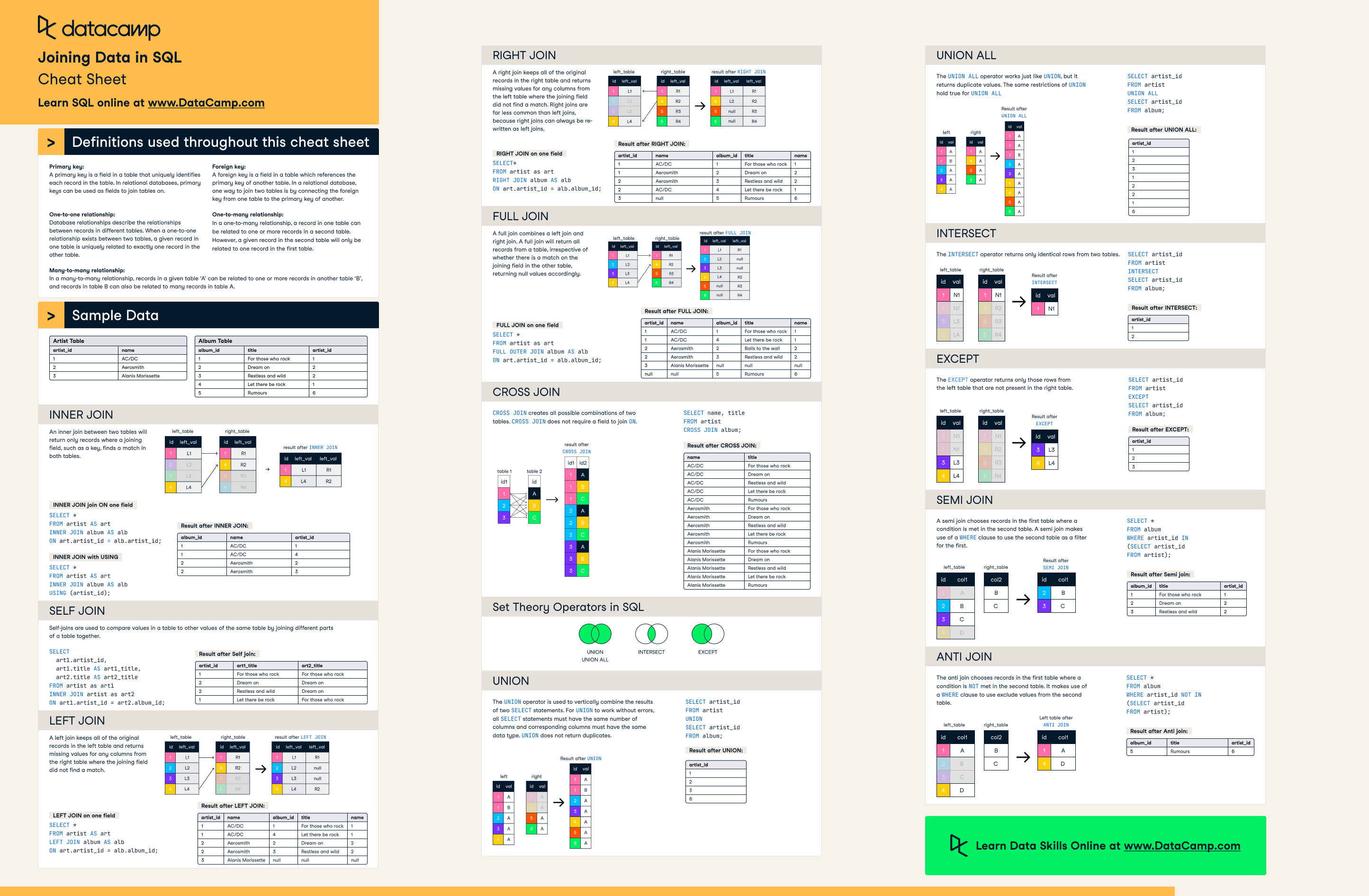SQL Joins Cheat Sheet
With this SQL Joins cheat sheet, you'll have a handy reference guide to joining data in SQL.
jul 2022 · 6 min leer
RelacionadoSee MoreSee More
hoja de referencia
SQL Basics Cheat Sheet
With this SQL cheat sheet, you'll have a handy reference guide to basic querying tables, filtering data, and aggregating data
Richie Cotton
5 min
hoja de referencia
MySQL Basics Cheat Sheet
With this MySQL basics cheat sheet, you'll have a handy reference guide to basic querying tables, filtering data, and aggregating data
Richie Cotton
6 min
hoja de referencia
SQL Window Functions Cheat Sheet
With this SQL Window Functions cheat sheet, you'll have a handy reference guide to the various types of window functions in SQL.
Richie Cotton
10 min
hoja de referencia
PostgreSQL Basics Cheat Sheet
With this PostgreSQL cheat sheet, you'll have a handy reference guide to basic querying tables, filtering data, and aggregating data
Richie Cotton
6 min
tutorial
Introduction to SQL Joins
In this tutorial, you'll learn about the mechanics of joins in SQL and its different types.
Sayak Paul
9 min
tutorial
Joins in SQL Tutorial
This tutorial will explain how to join tables together using primary and foreign keys in an SQL Server.
DataCamp Team
5 min
